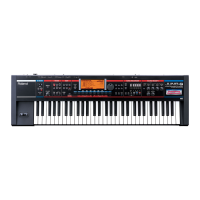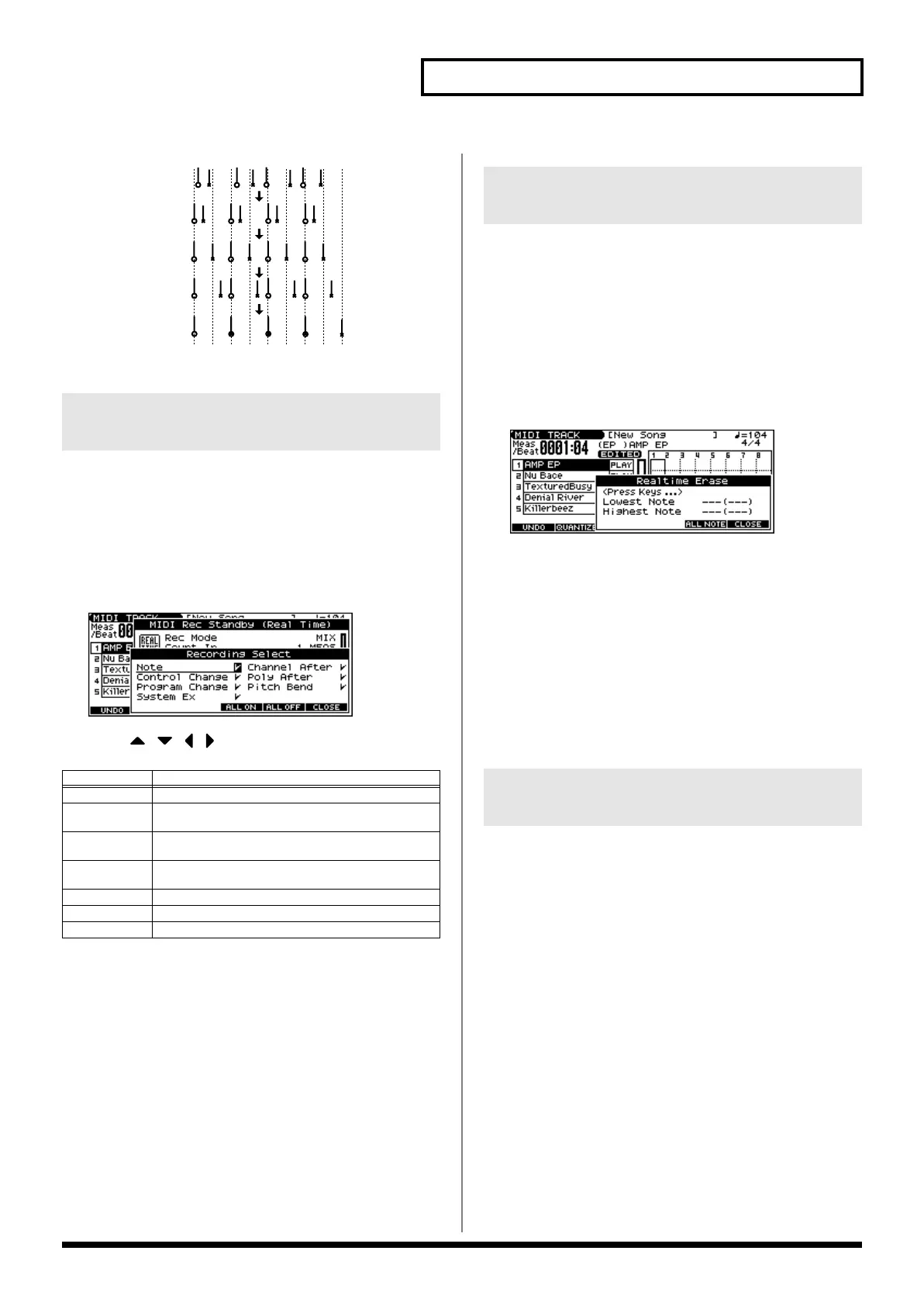91
Recording a Song (MIDI Track)
Rate:
When you use realtime recording, all of your sequencer data will
normally be recorded. If you want to avoid recording a specific type
of data, you can turn its Recording Select setting “OFF.”
1.
Press [REC].
2.
Press [F5 (REC SELECT)].
The Recording Select window appears.
3.
Press [ ] [ ] [ ] [ ] to select the sequencer data (MIDI
messages) that will be recorded.
4.
Use the VALUE dial or [INC] [DEC] to add a check mark (
✔
).
The message will be recorded if you assign a check mark (
✔
),
and will not be recorded if you remove the check mark.
• [F4 (ALL ON)]: All of the sequencer data will be recorded.
• [F5 (ALL OFF)]: No sequencer data will be recorded.
5.
Press [F6 (CLOSE)] to close the Recording Select window.
Realtime Erase is a function that erases unwanted data during
realtime recording. This is particularly convenient during loop
recording, since it lets you erase data without stopping recording.
* Realtime Erase can be executed only if the Recording Mode is set to “MIX.”
1.
Begin realtime recording (p. 88).
The Realtime Rec Control window appears.
2.
Press [F4 (ERASE)].
The Realtime Erase window appears.
3.
Erase unwanted data.
• To erase all data, press [F5 (ALL NOTE)]. Data will be erased
for as long as you hold down the button.
• To erase notes of a specific key, hold down that key. Data for
that note will be erased for as long as you hold down that key.
• To erase notes of a specific key range, hold down the top and
bottom keys of that range. Data for that range will be erased for
as long as you hold down those keys.
4.
Press [F6 (CLOSE)] to close the Realtime Erase window.
You will return to the normal recording state.
When recording arpeggios in real time, you can synchronize the
arpeggio with the song recorder start/stop timing.
For details, refer to
Arp/Rhythm Sync Switch
(p. 162).
Selecting the Sequencer Data that
will Be Recorded (Recording Select)
MIDI Message Explanation
Note Represent notes.
Control
Change
Apply various effects such as modulation or expression.
Program
Change
Select sounds.
System Ex Used to make settings unique to the JUNO-G, such as
sound parameters.
Channel After Apply aftertouch to an entire MIDI channel.
Poly After Apply aftertouch to individual keys.
Pitch Bend Change the pitch.
Original performance data
Rate= 25%
Rate= 50%
Rate= 75%
Rate=100%
Up
beat
Up
beat
Up
beat
Up
beat
Erasing Unwanted Data While You
Record (Realtime Erase)
Recording Arpeggios Aligned to
the Measures of the Song Recorder
JUNO-G_e.book 91 ページ 2006年2月13日 月曜日 午後2時44分

